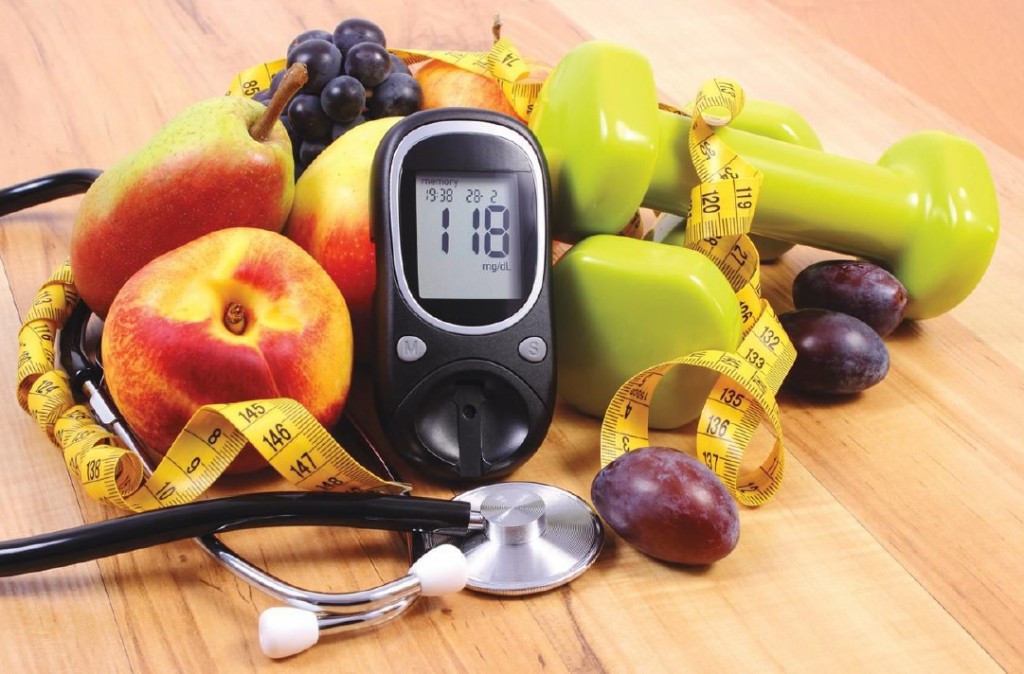If artichokes are not on your in-season spring menu, then this recipe rostar should change your mind. Loaded with nutrients and a distinctive flavor, this unique-looking vegetable is in fact a superfood that is versatile for appetizers, as well as main dishes. Not even all of its admirers are aware — the artichoke is a green flower bud that come from the same family as thistles. Artichokes are jampacked with vitamins C and K, folate, and magnesium. Artichokes can be enjoyed in various dishes, but their extract can also be mixed in tea. Artichokes have been shown to have anti-inflammatory properties, which are very beneficial to the liver. They can help combat inflammation and oxidative stress, helping the liver function well. Several studies have also shown that artichokes can help regulate blood pressure and promote gut health. Like we said—the glorious artichoke is a superfood that should not be ignored. This spring, explore these artichoke recipes—beyond the usual dips—that will enliven your taste buds, and help protect your liver!
Homemade Spinach Artichoke Pizza (from https://www.cookingclassy.com/ )
INGREDIENTS:
16 oz pizza dough, homemade or store-bought
8 oz fresh spinach, divided
2 tablespoons butter
2 tablespoons all-purpose flour
3/4 cup milk
1/4 teaspoon onion powder
Salt and freshly ground black pepper
1 clove of garlic, minced
2 extra virgin olive oil, divided
4 oz provolone cheese (1 cup – *chopped deli slices can be used)
2 oz shredded mozzarella cheese (1/2 cup)
2 oz finely shredded parmesan cheese (lightly packed 1/2 cup)
6 – 8 artichoke hearts (canned), drained well and quartered (don’t use marinated)
Red pepper flakes, for serving (optional)
INSTRUCTIONS:
- Preheat the oven to 450 °F. Place the pizza stone in preheated oven and allow to rest in the oven for 20 minutes. Meanwhile, stretch and shape pizza dough over a sheet of parchment paper to a 13-inch round, while creating a taller rim along the outer edge.
- Brush with 1 tablespoon olive oil and season crust lightly with salt and freshly ground black pepper, then allow to rest while pizza stone preheats (note that if your pizza crust has been refrigerated, be sure to bring it to room temperature first, then shape and let it rest the 20 minutes).
- In a large saucepan, heat the remaining 1 tablespoon olive oil over medium-high heat. Once the oil is hot, add 3/4 of the spinach and saute just until wilted. Transfer to a layer of paper towels and gently press some of the excess liquid out. Finely chop spinach and set aside.
- In a small saucepan, melt butter over medium heat, then while whisking add flour and onion powder and cook for 2 minutes, stirring constantly. Then while whisking slowly stir in milk and increase the temperature to medium-high heat and cook, stirring constantly until the mixture has thickened well.
- Season with salt and pepper to taste. Remove from heat and stir in minced garlic and sautéed, chopped spinach. Chop remaining fresh spinach (you should have about 1-1/2 cups chopped), set aside
- To assemble the pizza, spread the spinach béchamel sauce (the white sauce) evenly over pizza crust, leaving the rim uncoated.
- Sprinkle the chopped, fresh spinach over the sauce followed by provolone, mozzarella, parmesan cheeses, and chopped artichokes.
- Slide a pizza peel under the parchment paper and carefully transfer pizza to the hot pizza stone in oven. Bake 10 – 13 minutes until the crust is golden brown.
- Cut into slices and serve warm sprinkled with red pepper flakes to taste if desired.
Sumac-Rubbed Lamb with Minty Artichokes (from https://www.bonappetit.com/)
INGREDIENTS:
1 (4 – 5 lbs.) boneless leg of lamb
3 tablespoons sumac, plus more for serving
1 tablespoon freshly ground black pepper, plus more
2 heads of garlic, halved crosswise
2 (14-oz cans) unmarinated artichoke hearts, drained, halved lengthwise
1/2 bunch oregano, plus leaves for serving
1 cup dry white wine
1/4 cup extra-virgin olive oil
1½ cups mint leaves, divided
1 to 2 bunches of red radishes with tops, quartered, and/or 4–6 watermelon and/or purple…
1 shallot, thinly sliced into rings
2 tablespoons white wine vinegar
3 tablespoons toasted sesame seeds
5 teaspoons Diamond Crystal or 1 Tbsp
Aioli, labneh, or plain whole-milk Greek yogurt (for serving)
INSTRUCTIONS:
- Place a rack in the middle of the oven; preheat to 275°F. If lamb is tied or trussed, remove any twine or netting. Sprinkle lamb all over with 3 tablespoons sumac, 5 teaspoons Diamond Crystal or 1 tablespoon Morton kosher salt, and 1 tablespoon pepper.
- Reroll lamb so the fattier side is on top (it doesn’t have to be tight; you can just close it back up like a book). Using 3–4 pieces of kitchen twine, tie lamb in 2-inch intervals to close. Place bottom halves of both garlic heads, cut side up, in the center of a 13×9″ baking dish and set lamb, fat side up, on top (the garlic acts as a makeshift, better-tasting wire rack). Scatter cloves from the remaining top halves of garlic heads around the lamb, then tuck artichokes and sprigs from ½ bunch of oregano around. Pour in wine and oil; season vegetables with salt and pepper. Roast lamb and artichokes until a thermometer inserted into the thickest part of lamb registers 135°F for medium-rare, 2 to 2½ hours.
- Remove lamb and artichokes from the oven and increase the temperature to 500°F (taking the lamb out while the oven heats up prevents the meat from overcooking). Once the oven temperature is at 500°F, slide the baking dish back into the oven and roast until the fat on the lamb is golden brown and artichokes are sizzling and starting to crisp around the edges, 10–12 minutes. Carefully transfer lamb to a cutting board and let rest for at least 20 minutes.
- Meanwhile, scatter half of the mint leaves over artichokes and toss well to coat. Toss radishes, shallot, and vinegar in a small bowl to combine; season radish salad with salt and pepper.
- Thinly slice the lamb and arrange on a platter or serve directly on a cutting board and spoon some of the artichoke mixture and any pan juices over. Scatter sesame seeds, oregano leaves, more sumac, and remaining mint on top.
- Spoon some aioli into a bowl and serve lamb with radish salad, aioli, and remaining artichoke mixture alongside.
- PREPARE IN ADVANCE: Lamb and artichokes can be roasted 3 hours ahead. Let sit at room temperature. Reheat artichokes just before serving.
Eggs in Purgatory with Artichoke Hearts, Potatoes, and Capers (from https://www.epicurious.com/)
INGREDIENTS:
3 tablespoons extra-virgin olive oil
1½ cups chopped onion
2 teaspoons chopped fresh thyme
1/2 teaspoon dried crushed red pepper
Coarse kosher salt
1 (8- to 10-ounce) package of frozen artichoke hearts, thawed, drained
2 garlic cloves, minced
1 (28-ounce) can of diced tomatoes in juice (preferably fire-roasted)
8 ounces red-skinned or white-skinned potatoes, peeled, cut into 1/2-inch cubes
2 tablespoons drained capers
8 large eggs
1/3 cup freshly grated Parmesan cheese
INSTRUCTIONS:
- Heat olive oil in a heavy large skillet over medium heat. Add chopped onion, chopped thyme, and crushed red pepper; sprinkle lightly with coarse kosher salt and sauté until onion is tender and golden brown, about 10 minutes. Add artichokes and minced garlic; stir for 1 minute. Stir in diced tomatoes with juice and bring to boil. Reduce heat; cover skillet and simmer for 15 minutes to allow flavors to blend.
- Meanwhile, cook potatoes in a small saucepan of boiling salted water just until tender, about 8 minutes. Drain. Add potatoes and capers to tomato-artichoke sauce; cover and simmer for 5 minutes. Season to taste with coarse salt and pepper. PREPARE IN ADVANCE: Tomato-artichoke sauce can be made up to 6 hours ahead. Cool slightly, then cover and refrigerate. Rewarm sauce before continuing.
- Preheat the oven to 375°F. Pour tomato-artichoke sauce into a 13 x 9 x 2-inch glass baking dish. Using the back of a spoon, make 8 evenly spaced indentations in the sauce for holding eggs. Crack 1 egg into each indentation in sauce (some of the eggs may run together slightly in spots). Bake until egg whites and yolks are softly set, 12 to 16 minutes. Carefully remove baking dish from oven; sprinkle grated Parmesan cheese over and serve.
Artichoke Fritters With Green Goddess Dipping Sauce Recipe (from http://recipeofhealth.com/)
INGREDIENTS:
Sauce
1/4 cup chopped fresh chives
1/4 cup chopped fresh Italian parsley
2 tablespoons white wine vinegar with tarragon
3 tablespoons extra-virgin olive oil
1/2 cup crème fraîche or sour cream
Fritters
[**Toni >> Artichoke — as an ingredient –is missing from this section]
1 cup and 2 tablespoons all-purpose flour
3/4 cup lager beer, room temperature
3 tablespoons extra-virgin olive oil, divided
2 tablespoons fresh lemon juice, divided
1½ teaspoons finely grated lemon peel
Canola oil (for deep-frying)
2 tablespoons chopped fresh Italian parsley
Lemon wedges (for garnish)
INSTRUCTIONS:
Sauce
- Combine the first 4 ingredients in a processor; blend until the mixture is finely chopped.
- With the machine running, add oil through the feed tube; puree until the mixture is almost smooth. Add crème fraîche; process until smooth.
- Transfer sauce to a small bowl; season with salt and pepper.
- PREPARE IN ADVANCE: Can be made 1 day ahead. Cover and chill. Rewhisk before using.
Fritters
- Sift flour and 1/2 teaspoon salt into a medium bowl. Make well in the center of flour mixture; add beer, egg yolks, 2 tablespoons olive oil, 1 tablespoon lemon juice, and lemon peel, and whisk until well blended. Let batter stand at room temperature for at least 1 hour and up to 2 hours. Rewhisk before continuing.
- Fill a large bowl with water; add the remaining 1 tablespoon of lemon juice. Using a large knife, cut off the top half of 1 artichoke, then cut off all but 3/4 inch of stem. Remove tough outer leaves until only 2 rows of tender green leaves remain in the center. Using a vegetable peeler, peel the stem. Cut artichoke lengthwise in half. Using a paring knife, cut out prickly choke in the center; discard. Cut artichoke lengthwise into 1/4-inch-thick slices; immediately place in lemon water. Repeat with remaining artichokes.
- Drain artichokes. Heat the remaining 1 tablespoon olive oil in a large skillet over medium-low heat. Add artichokes and 1/2 cup tap water to skillet; sprinkle with salt and pepper. Bring to boil. Cover, reduce heat to medium, and simmer until artichokes are tender and water evaporates about 15 minutes. Remove from heat and cool.
- PREPARE IN ADVANCE: Tendered artichokes can be made 2 hours ahead. Cover and chill.
- Line a large baking sheet with several layers of paper towels. Beat egg whites in a medium bowl until stiff but not dry. Fold whites into the batter, then fold in artichokes.
- Pour enough canola oil into a large saucepan to reach the depth of 2 inches. Attach a deep-fry thermometer to the side of the pan; heat oil to 375°F.
- Working in batches, drop artichoke mixture by tablespoonfuls into oil; fry until golden, turning often, about 2 minutes per batch.
- Using a slotted spoon, transfer fritters to paper towels. Sprinkle with salt.
- Transfer fritters to platter; sprinkle with parsley. Garnish with lemon wedges. Serve sauce alongside.





























